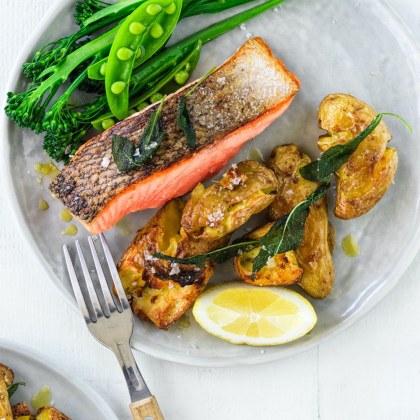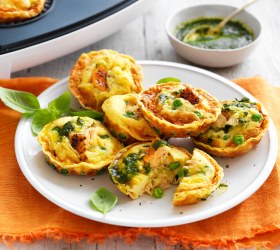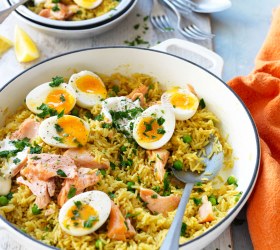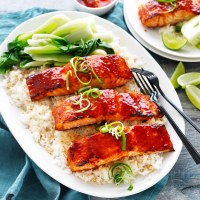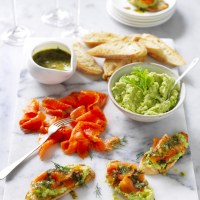How to cook salmon
Salmon is a great beginner's fish for cooking. Its fillets are thick and high in fat (hello omega-3s!) which makes it harder to overcook, and even if you do slightly, it'll still be succulent and satisfying. So if you're just learning, follow these tips and you'll be rewarded!
How do you prepare salmon?
Before cooking, pat salmon fillets dry with paper towel. You want to dry fillets as thoroughly as possible, this will help you get a nice crisp skin or sear on the flesh. Avoid washing or submerging salmon in water, as the flesh of the salmon will absorb it and it’ll lose flavour and texture.
Do I need to pin bone salmon?
Yes, salmon fillets contain small and thick needle-like bones. You can use pin-boning tweezers to take them out, or just ask your fishmonger or supermarket seafood counter to do it for you.
Should I have skin on or off?
It depends on your cooking method. Fillets with skin on are easier to handle and better for cooking on a BBQ or panfrying as they keep the salmon meat together. Salmon skin is particularly delicious and crisp when roasted, pan-fried or grilled. If steaming or adding to a curry or sauce, skin off is a better alternative.
What are the best methods of cooking salmon?
Due to its high fat content, salmon is a forgiving fish that will be delicious even if you overcook it slightly. It’s also a versatile fish that suits different cooking methods. Simply pan-fry it in oil or butter and pair it with a delicious herb dressing or glaze it and roast it in the oven. You can also BBQ it or steam and simmer it in a curry.
How long do you cook salmon?
It depends, because salmon fillets will vary in thickness and length so use these cooking times as a guide only.
If cooking in an oven, oil and season your salmon. Place skin side down on a baking dish and cook in a preheated to 200°C oven for about 10-15 minutes.
If pan-frying or BBQing, brush skin with oil and season with salt. Heat a pan or BBQ plate over medium-high heat and cook salmon skin side down. Cook for four-five minutes and watch as the colour of the flesh changes. When it reaches halfway up the fillet, turn it over and continue cooking for another two minutes. We aim to eat salmon medium rare so if you like it more or less done, reduce or increase the cooking times.
If steaming, arrange fillets inside a steamer basket in a single layer. Place fresh aromatics such as lemon and herbs beneath it or over the top. Cover with a lid and steam for five-eight minutes.
How do I know when salmon is done?
Take an internal temperature of the cooked fish. A meat thermometer inserted into the thickest part of the fillet which reads 60-65°C will give you a medium cooked salmon. Alternatively, press down gently on the thickest part of the fillet. If it flakes and separates easily, remove from heat and allow salmon to rest for a few minutes before serving.
What is the white stuff that comes out of cooked salmon?
Don’t be alarmed, the white albumin is a protein within the flesh. On heating, it coagulates into a semi-solid. This is normal and can be eaten.
How do you reheat salmon?
There are a few options. In a low oven, 150°C, place it inside an oven safe dish and cover with foil or lid for about 30 minutes. The internal temperature should be 70°C.
Keep an eye on the salmon so that it does not dry out. Alternatively, use the microwave reheat settings. Place inside a microwave safe dish and cover with a lid. Use the low power setting. Microwaves will heat from the outside in, so place the thickest part of the fillet on the outer edges of the microwave.
Salmon recipes
Get more in-depth salmon recipes below! You'll find easy ideas including sweet-and-spicy oven-baked salmon to a flaky filo pie filled with salmon and seafood chunks.

